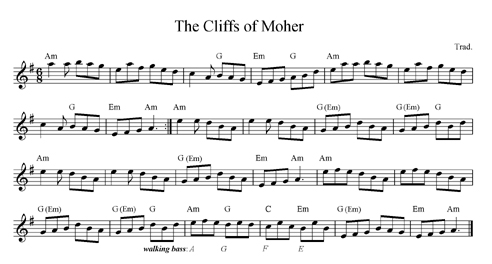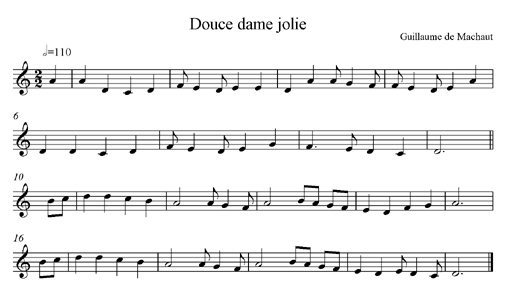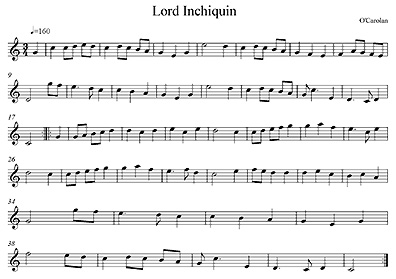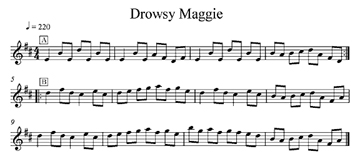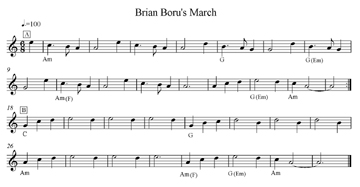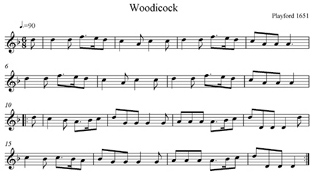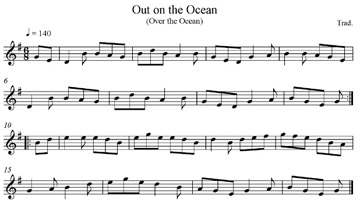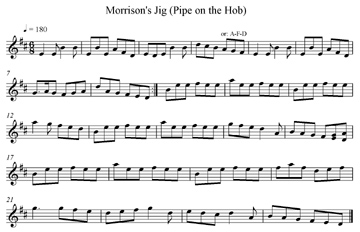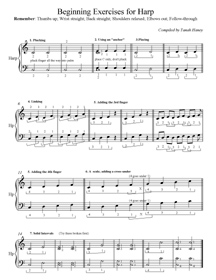 Click on the picture to get a larger printable version (it usually works better if you right click and choose “save link as”, or “save target as”, and then print it from your computer later; some browsers have a hard time printing high-rez images at the right size).
Click on the picture to get a larger printable version (it usually works better if you right click and choose “save link as”, or “save target as”, and then print it from your computer later; some browsers have a hard time printing high-rez images at the right size).
These are a few easy beginner exercises that you can use to start getting those stiff fingers a little more flexible and coordinated. All linking (“walking”) exercises can be continued for a full octave (or, up the entire harp if you prefer!). Fingering inside square brackets means all fingers in the brackets should be placed before beginning to pluck the first note. The little “x” in the crossing-over exercise indicates when to cross the fourth finger under the thumb (or, when to cross the thumb over one of the other fingers).
These exercises aren’t meant to be a substitute for a proper exercise book, just something to get you started.
For lever harps, I highly recommend Deborah Friou’s “Harp Exercises for Agility and Speed”; it’s the one all my students use. It covers just about every exercise you could possibly need on a lever harp, and would be equally helpful to pedal harp players. You can get Deborah’s books at the Sylvia Woods Harp Center, Melody’s Traditional Music & Harp Shoppe, and most other harp stores.
For more free handouts, check out the Harp Center Handouts section of the Sylvia Woods website.

